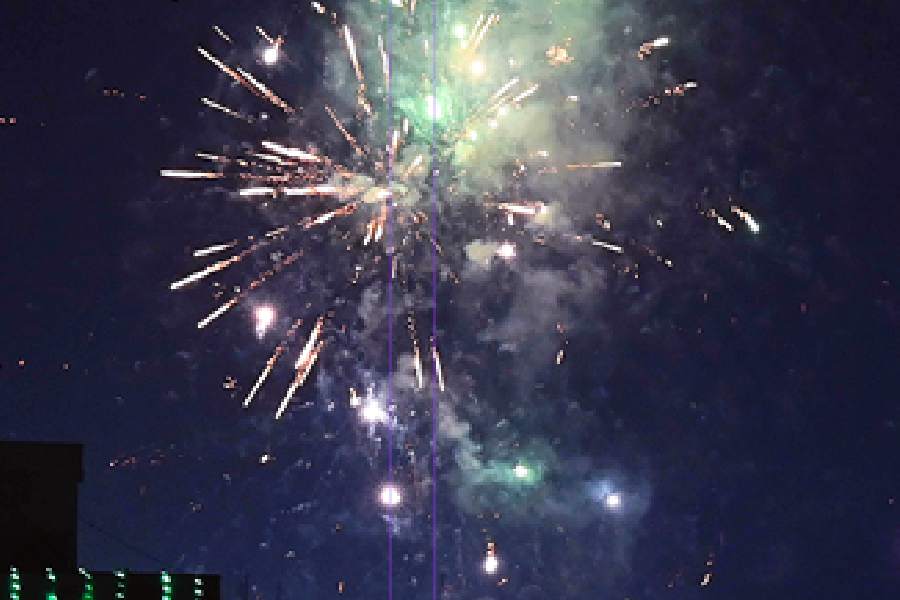An early Diwali, relatively higher temperatures and stronger-than-usual winds ensured Calcutta’s air quality on Diwali night remained “satisfactory” and “good”, way better than last year.
At 10pm on Thursday, the air quality monitoring station of the Central Pollution Control Board at Rabindra Sarobar reported “good” air quality.
The stations at Ballygunge, Bidhannagar, Rabindra Bharati University (BT Road campus), Fort William, Victoria Memorial and Jadavpur recorded “satisfactory” air quality. There are seven “continuous air quality monitoring stations” in Calcutta and Bidhannagar.
In 2023, six air quality monitoring stations recorded “poor” air quality at 10pm.
One station — at Rabindra Bharati University — recorded “moderate” air quality.
Calcutta High Court had fixed a two-hour window — 8pm to 10pm — for bursting crackers on Diwali. Only green crackers could be sold and used.
Sources said pollutants started accumulating in the air since the evening as sounds of crackers were heard much before the two-hour window. By 10pm, the pollutant level in the air was possibly the night’s highest.
Many residents across the city complained of indiscriminate bursting of noisy crackers but the wind in the evening and comparatively high temperatures offset some of the impact.
The trend continued into Friday morning as well. At 6am on Friday, the air quality at three stations was “moderate” and “satisfactory” at the rest.
According to the National Air Quality Index, “good” air has minimal health impact, “satisfactory” air can cause minor breathing discomfort to sensitive people, “moderate” air leads to breathing discomfort in people with heart and lung diseases and “poor” air can cause breathing discomfort to most people on prolonged exposure.
A scientist at the state pollution control board (PCB) attributed the better air quality to local weather and the increasing awareness among people to use green crackers.
“The meteorological factors were favourable on Thursday compared to Diwali last year. It is still warm and the temperatures are quite high. Besides, the wind speed on Thursday evening and night helped disperse the pollutants,” said the scientist.
The maximum temperature on Thursday was 32 degrees Celsius, 1.1 degrees above normal. The minimum was 26.9, which was 4.3 notches above normal.
The maximum temperature on Diwali 2023, which was on November 12, was 29.8 degrees, a notch below normal. The minimum was 22.2 degrees, two notches above normal.
Higher temperatures meant the air closer to the ground was warmer. The warmer the air, the faster it goes up.
“The pollutants floating close to the ground, including those released by fireworks, went up with the warm air. This reduced the pollutant load in the air that we breathed,” said the scientist.
“Had Thursday been cooler, the pollutant-rich air would have hung close to the ground longer.”
The PCB scientist said the wind speed on Thursday evening and night was 8 metres per second. As winter approaches and the mercury drops, the wind speed drops to around 2 metres per second or even less, the scientist said.
“In the evening and at night, the winds played a key role in dispersing the pollutants. That is why the air quality improves whenever the wind speed is high. In the winter months, the wind speed goes down, leading to a rise in air pollution,” the scientist said.











